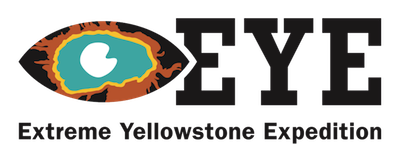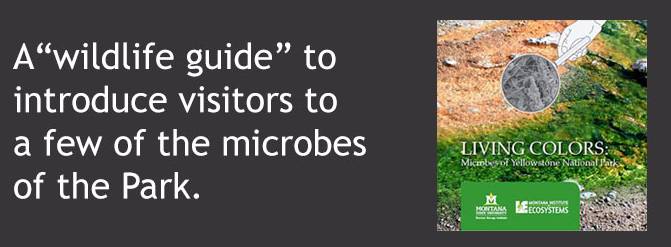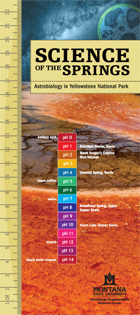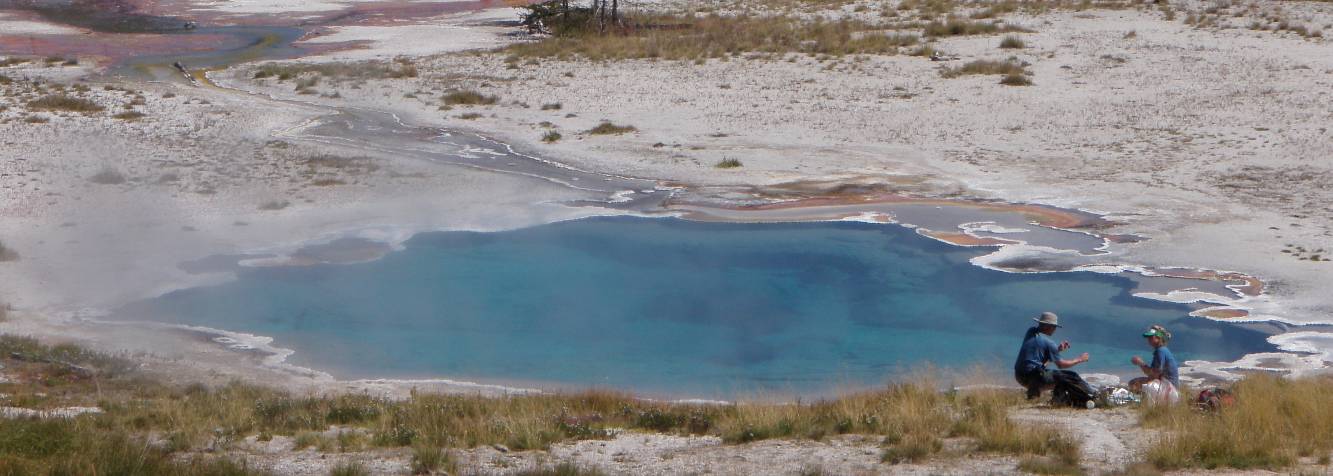Education Materials
Our outreach and education activities are strengthened by many factors, including MSU's proximity to Yellowstone National Park, the expertise and experience of our faculty and close partners and the outstanding commitment from our MSU students to share their work with the public.
FEATURED RESOURCES

Extreme Yellowstone Expedition (EYE) is a series of activities and lesson plans for middle schools geared to the Next Generation Science Standards and focusing on astrobiology and Yellowstone National Park. Based on an actual scientific expedition into Yellowstone's backcountry, students will see research come to life, mimic experiments conducted by scientists, work with actual data sets, and get to know researchers and STEM role models.
Living Colors
TBI has created a new Yellowstone microbial identification wheel and an accompanying book called Living Colors: Microbes of Yellowstone National Park, a paperback guide that introduces the public to some of the microbes of Yellowstone.
 Living Color Information and Microbial Animations
Living Color Information and Microbial Animations
Yellowstone ABCs
This three-part lesson ties together the concepts of pH, Yellowstone extremophiles,
and the search for life beyond the Earth. In part one, students conduct a laboratory
activity in which they test several substances to determine pH. In part 2, students
plot the pH values of Yellowstone National Park thermal features on a pH scale, then
learn about extremophiles and the types of environments in which they are found. In
part 3, a brief reading connects the concepts learned in parts 1 and 2 and expands
on this content.Mars and Europa are discussed as possible sites where extraterrestrial
life may be found. Lastly, an exit quiz assesses student knowledge of the lesson and
its major themes.
- Yellowstone ABC's: Student Workbook [380 KB PDF]
- Yellowstone ABC's: Teacher Guide [188 KB PDF]
Science of the Springs
A guidebook to Yellowstone astrobiology sites. Grades 6-12.
- Science of the Springs Reading Guide [385 KB PDF]

Questions and activities for students to work through after reading the Science of the Springs guide to astrobiology in Yellowstone National Park. - Science of the Springs Answer Key [386 KB PDF]
- Science of the Springs Student Teacher Guide [96 KB PDF]
- Science of the Springs Power Point Presentation [13.3 MB PPT]
In this presentation, students learn the same general information that is presented in the Science of the Springs booklet. The Powerpoint gives a general overview of astrobiology and explains why NASA researchers are studying Yellowstone. Topics include extremophiles, Yellowstone National Park thermal sites important to research, and habitability. - Science of the Springs Power Point Guide [87 KB PDF]
Life is All Around Us
Book designed to help children aged 3 through 8 understand the most basic concept of astrobiology.
Planet in a Bottle / Extreme Planet Project
In this activity, students learn the basic principles behind the Goldilocks zone,
extremophiles, and astrobiology through a reading, two experiments, and a project.
In part one, students conduct experiments on three simulated planets in bottles and
collect data on each planet’s suitability for life. In part two, students build their
own simulated planet and explore changes variables to make planets more or less hospitable
to life. Lastly, students can design their own planet using NASA web resources then
create an extremophile that would live on the planet. Grades 5-12.
- Planet in a Bottle -- Student Workbook [662 KB PDF]
- Planet in a Bottle -- Teacher Guide [623 KB PDF]

